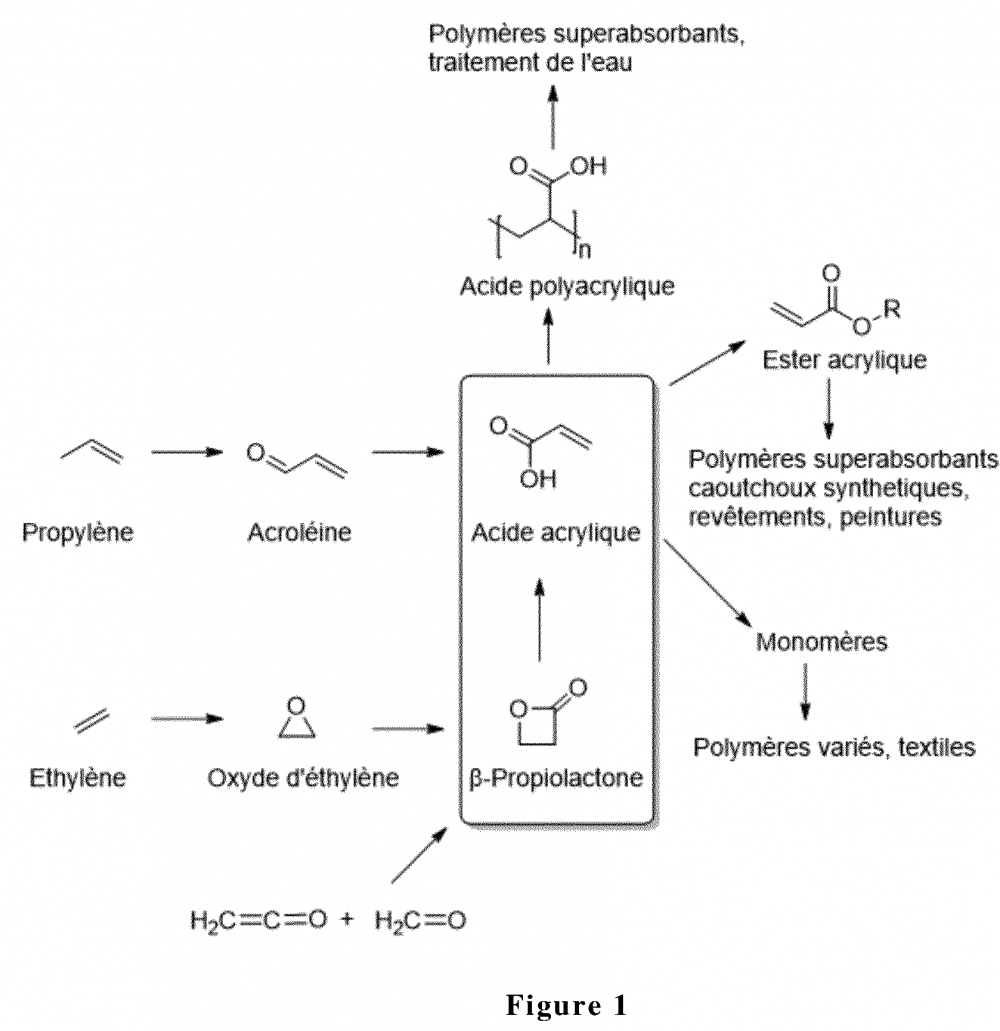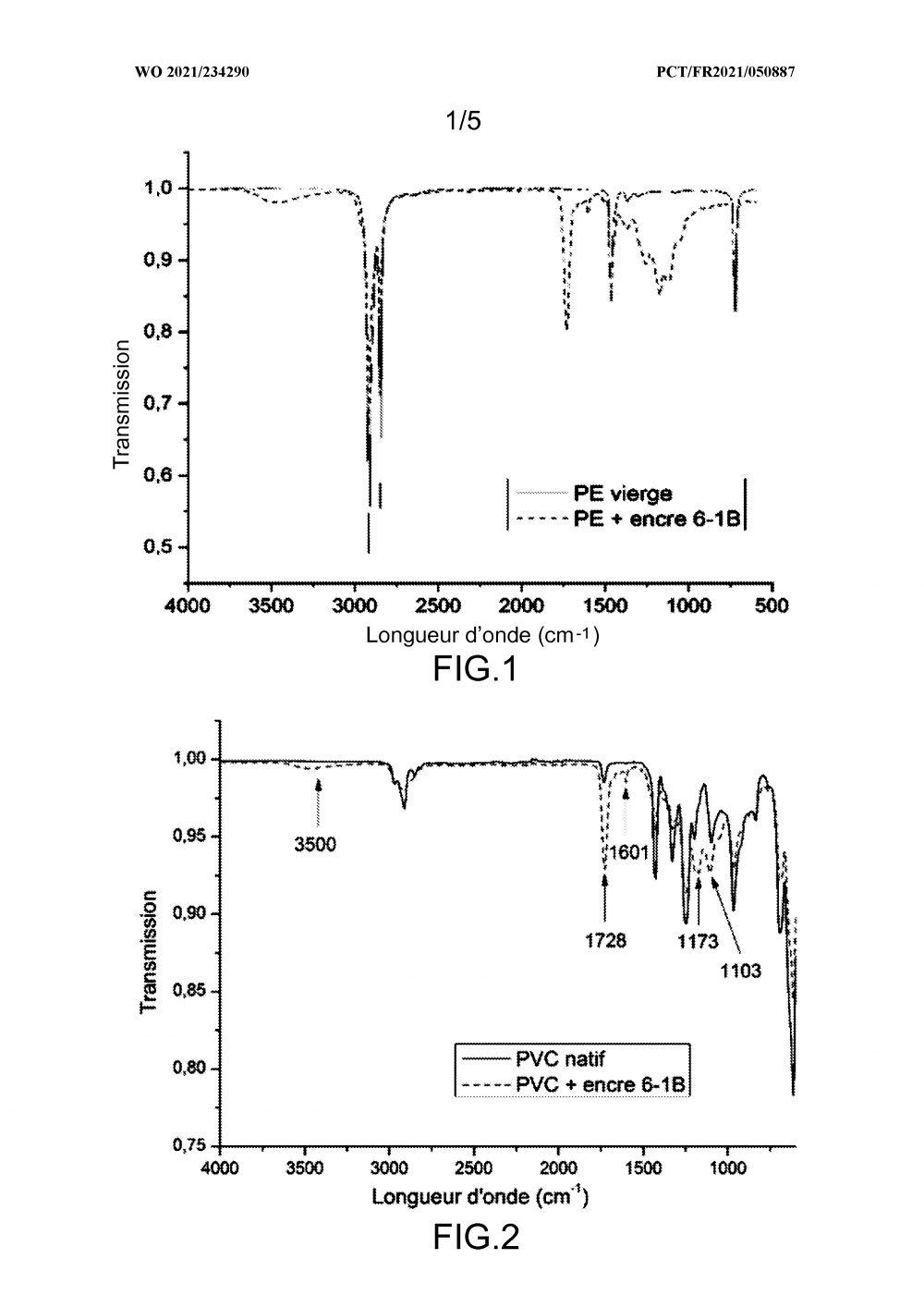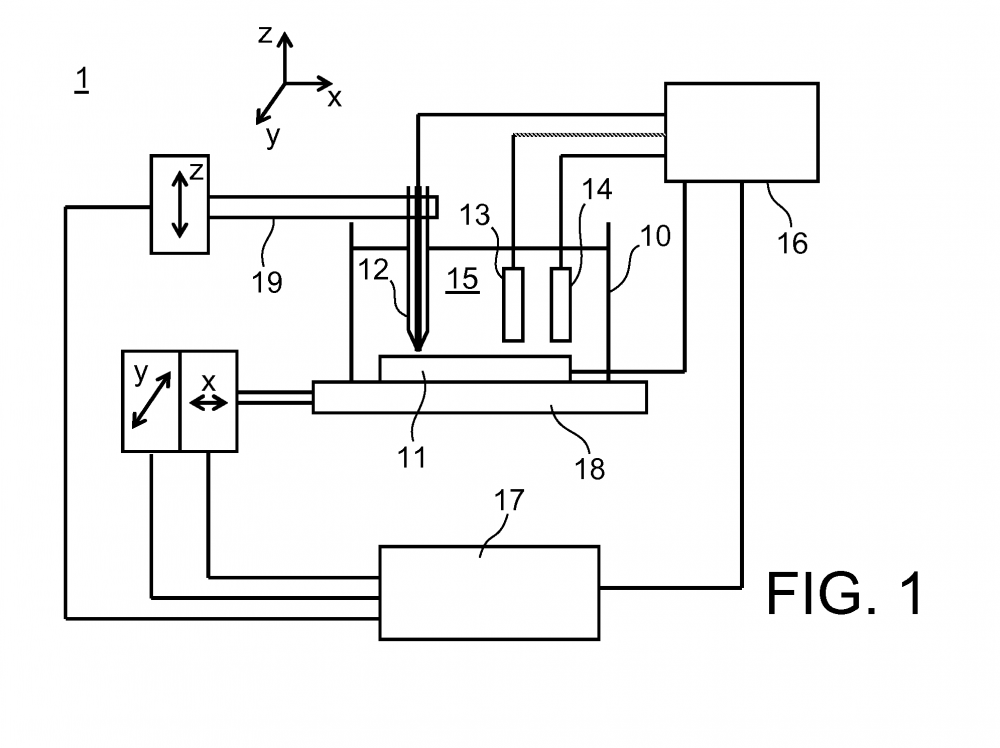Brevets 2021
Numéro d’identification WO/2021/233839 (lien WIPO)
Numéro d’identification CEA : BD20507
Année de dépôt : 19.05.2020
Date de publication : 25.11.2021
Procédé de préparation d'acide acrylique a partir de β-propiolactone
La présente invention concerne un procédé de préparation d'acide acrylique à partir de β-propiolactone et ses utilisations. Le procédé de l'invention repose sur une réactivité spécifique de la β-propiolactone qui, dans des conditions opératoires douces notamment en termes de température, conduit sélectivement à la formation de l'acide acrylique.
Contact : Emmanuel Nicolas et Thibault Cantat(NIMBE/LCMCE)
Method for preparing acrylic acid from β-propiolactone (WIPO link)
The present invention relates to a method for preparing acrylic acid from β-propriolactane and to the uses thereof. The process of the invention is based on a specific reactivity of β-propriolactane whereby acrylic acid is formed under operating conditions that are mild, especially in terms of temperature.
Contact: Emmanuel Nicolas et Thibault Cantat(NIMBE/LCMCE).
Numéro d’identification WO/2021/234290 (lien WIPO)
Numéro d’identification CEA : BD20539
Année de dépôt : 20.05.2020
Date de publication : 25.11.2021
Procédé et solution pour préparer une surface à activité bactériostatique et bactéricide, surface ainsi préparée et ses utilisations
La présente invention concerne un procédé pour conférer des propriétés bactériostatiques ou bactéricides à la surface d'un objet consistant à : (a) mettre en contact ladite surface avec une solution aqueuse comprenant un polymère de type ionène fonctionnalisé par au moins une fonction polymérisable par voie radicalaire, un composé organique à deux fonctions polymérisables par voie radicalaire, un composé organique à trois fonctions polymérisables par voie radicalaire et un photo-amorceur, (b) soumettre ladite surface revêtue de ladite solution aqueuse à une irradiation moyennant quoi une polymérisation radicalaire est amorcée et un réseau polymère tridimensionnel greffé comprenant des polymères de type ionène est obtenu. La présente invention concerne également ladite solution aqueuse et l'objet ainsi obtenu ainsi que ses utilisations notamment pour préparer des vêtements de protection, pour emballer et/ou conserver les produits alimentaires frais mais aussi pour purifier ou décontaminer une solution ou une surface.
Contact : Geraldine Carrot (NIMBE/LICSEN)
Process and solution for preparing a surface with bacteriostatic and bactericidal activity, surface thus prepared and uses thereof (WIPO link)
The present invention concerns a process for imparting bacteriostatic or bactericidal properties to the surface of an object, by: (a) contacting said surface with an aqueous solution comprising an ionene polymer functionalized with at least one radically polymerizable function, an organic compound having two radically polymerizable functions, an organic compound having three radically polymerizable functions, and a photoinitiator, (b) subjecting said surface coated with said aqueous solution to irradiation such as to initiate a radical polymerization and to give a grafted three-dimensional polymeric network comprising ionene polymers. The present invention also concerns said aqueous solution and the object thus obtained and uses thereof particularly for preparing protective clothing, for packaging and/or preserving fresh food products but also for purifying or decontaminating a solution or a surface.
Contact : Geraldine Carrot (NIMBE/LICSEN)
Numéro d’identification WO/2021/181053 (lien WIPO)
Numéro d’identification CEA BD20208
Année de dépôt : 12/03/2020
Date de publication : 16.09.2021
Utilisation de la microscopie électrochimique à balayage comme technique prédictive d'un essai de corrosion au brouillard salin
L'invention se rapporte à l'utilisation de la microscopie électrochimique à balayage pour prédire les résultats de résistance à la corrosion qui seraient obtenus pour une surface S1 ayant subi un traitement anticorrosion si la surface S1 était soumise à un essai de corrosion au brouillard salin, laquelle utilisation comprend une analyse de la surface S1 par microscopie électrochimique à balayage. Applications : tout secteur d'activité, industriel ou de recherche, dans lequel il est recouru à des essais de corrosion au brouillard salin.
Contact : Gaëlle Charrier, Aurélien Doublet, Guy Deniau et Renaud Cornut (NIMBE/LICSEN)
Use of scanning electrochemical microscopy as a predictive technique for a salt fog corrosion test (WIPO link)
The invention relates to the use of scanning electrochemical microscopy for predicting the results of corrosion resistance that would be achieved by a surface S1 that has undergone an anticorrosion treatment if the surface S1 were subjected to a salt fog corrosion test, said use comprising an analysis of the surface S1 by scanning electrochemical microscopy. Applications: any sector of business, industry or research in which salt fog corrosion tests are carried out.
Contact: Gaëlle Charrier, Aurélien Doublet, Guy Deniau and Renaud Cornut (NIMBE/LICSEN).






